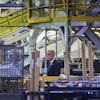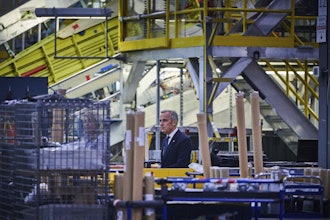Nautilus Minerals is poised to plunge its huge robotic mining machines into the Bismarck Sea, located off the coast of Papua New Guinea.
The sites Nautilus will mine are called Seafloor Massive Sulphide (SMS) deposits, which are created when mineral-laden superheated water from hydrothermal vents mixes with cold seawater to release metallic minerals to deposit on the seafloor.
Copper and gold reside in these deposits at levels higher than typical land-based mines. For instance, the SMS deposits contain gold grades of 20 grams per metric ton, while land mines average 6 grams.
The Toronto-based company has had an environmental permit — for the site they’ve named “Solwara,” meaning “salt water” in local lingo — since 2009, a mining lease since 2011 and their machines ready to go since 2012. After all these years of preparation, Nautilus Minerals is ready to test the robotic miners.
Nautilus will be operating two cutters and one collector about 1,600 meters below the surface, with assistance from a subsea slurry lift pump, riser and lifting system and production support vessel.
If all goes well, the fleet will deploy in 2018 for 30 months, according to Tech Insider. Nautilus Minerals has also identified nearly 40 other deposit sites in the Central and Southwest Pacific Ocean as future mining projects.
Do you think the seafloor could be the future of mining? What hazards do you see with removing minerals from underwater deposits? Comment below or tweet @MNetKatie.






















